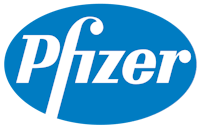COVID-19 Resource Center

The COVID-19 Vaccination Experience
We talk to members of the NPF community about what it was like receiving the COVID-19 vaccine.

COVID-19 Vaccine Q & A
Will taking the COVID-19 vaccine weaken my immune system? Will it make my psoriasis worsen? We compiled your most pressing questions to create this brief video with NPF COVID-19 Task Force co-chair, Dr. Joel Gelfand, M.D.

Podcasts: Coronavirus and Psoriatic Disease
In these special episodes, we talk to key experts and dive deep into what the Coronavirus means for you and your psoriatic disease.

Help NPF Improve Access to Care
NPF makes it easy to send messages to your lawmakers about issues that affect our community.

COVID-19 Webinar
Watch a recording of our recent webinar: "COVID-19 Updates: What it Means For You," to get the latest information and recommendations from our task force.

Telemedicine Tips
Technology has made it possible for you to stay in touch with your doctor. Get the latest info on how you can take advantage of telemedicine.
COVID-19 Virtual Event Recordings
Tune in to these recordings of our COVID-19 Town Halls and community conference.
NPF Town Hall - COVID-19 Update
September 01, 2021
Am I eligible for a COVID-19 vaccine booster? Should I get one, and when is the right time?
In this session, our experts answer the questions you have about virus variants, vaccines and vaccine boosters, specifically, for those with psoriatic disease.
COVID-19 Town Hall - Envisioning the Future
May 19, 2021
What will our new normal look like? And how do we end this pandemic?
Hear from our experts as they address the questions you have about vaccines and other pandemic related topics specifically for those with psoriatic disease.
Healthier Together: Navigating the Pandemic
April 10, 2021
Will the COVID-19 vaccines impact my treatment options? What does the research say about psoriatic disease and COVID-19?
Tune in to this special recording of our April 10, 2021 Community Conference, featuring a session with the NPF COVID-19 Task Force and a patient Q&A.
The Taste of Nothing
It was a blackberry pie that convinced Dedra Pennington to get tested for COVID-19.

Resources to Stay Healthy
Eat Healthy
Get a free copy of our Healthy Eating Guide filled with tips and recipes to feel your best.
Additional Resources
CDC Guidelines
Information and resources on COVID-19 from the Centers for Disease Control and Prevention.
WHO Guidelines
Learn more about the impact of the disease worldwide from the World Health Organization.
This resource center is supported by:




The National Psoriasis Foundation is solely responsible for all content and development.